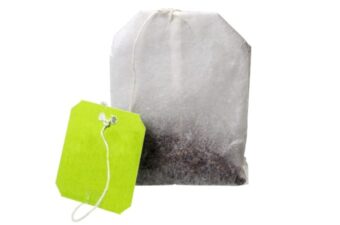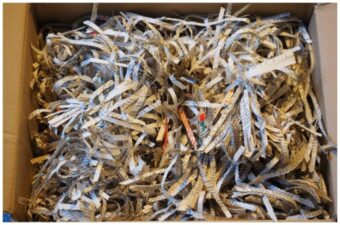3 Bin Compost System: A Simple Guide to Effective Composting

Are you a gardening enthusiast looking for an efficient method to create nutrient-rich compost for your garden? A 3 bin compost system might just be the ideal solution for you.
The 3 bin compost system involves either buying or constructing three separate bins positioned side by side. This method is great for gardeners who can turn a compost pile with a pitchfork and those who produce sizable amounts of food and plant waste.
Setting up the system may take slightly more effort than a single bin, but trust us, the benefits are well worth it. Using a 3 bin compost system, you can efficiently manage your composting process, ensuring that it breaks down correctly and produces that “black gold” you’ve heard so much about.
Give it a try, and watch your garden thrive with the nutritious compost you create.
Table of Contents
What is a 3 Bin Compost System?
A 3-bin compost system is an effective and organized method to turn organic waste into nutrient-rich compost for your garden. It consists of three separate compartments, each containing compost in different stages of decomposition. This process allows you to efficiently manage and produce your compost while taking up minimal space in your yard.
Components of the System
Bins: The main components are three compost bins arranged side by side. They can be open or enclosed, depending on your preference.
Stages: Each compartment holds compost of a different stage:
- The first bin holds fresh waste materials you’ve recently added.
- The second bin contains partially decomposed materials that require more time to break down.
- The third bin holds mature compost, ready to be utilized in your garden.
Turning: To speed up the composting process, you’ll need to turn and mix the contents of each bin to aerate and evenly distribute materials for decomposition.
Benefits of Using a 3 Bin System
- Efficiency: Having three bins allows for more efficient composting since each bin can be managed at its respective stage of decomposition.
- Organization: The system helps you keep track of the decomposition process and makes it easy to identify when compost is ready for use in your garden.
- Space-saving: The 3-bin system is compact and takes up minimal space in your yard compared to other composting methods.
- Pest Control: Enclosed bins can prevent unwanted pests from accessing your compost, and the system’s design minimizes unpleasant odors.
- Continuous Composting: By rotating your waste materials between bins, you have a continuous supply of usable compost.
Remember to regularly tend to each bin, turning and monitoring its progress, to achieve the best results from your 3-bin compost system.
How Does a 3 Bin Compost System Work?
A 3 bin compost system provides you with a practical and efficient way to compost your organic waste. It consists of three bins placed side by side, allowing for easy management, turning, and aeration of the compost.
In this system, you’ll start by adding your organic materials to the first bin. This includes things like kitchen scraps, yard waste, and even weeds. Be sure to maintain a good balance of green (nitrogen-rich) and brown (carbon-rich) materials.
As the compost starts to break down, you’ll move it to the second bin for the next stage of the process. This transfer allows you to effectively aerate and mix the compost, promoting faster decomposition. At this point, you should see an increase in temperature, which indicates successful hot composting.
While the first bin’s material decomposes in the second bin, you can continue adding new waste to the first bin. Once the compost in the second bin is fully broken down, you move it to the third bin, where it will mature and turn into rich, ready-to-use compost for your garden.
The third bin acts as a storage area for your finished compost, freeing up the first two bins for the ongoing process. This continuous cycle ensures that you always have fresh compost available for your garden or plants, while also managing and recycling your organic waste in an environmentally friendly way.
Is this Composting System Right for Me
Here’s a table that can help you determine if a 3 Bin Compost System is suitable for you:
| Factors to Consider | Yes | No | Not Sure |
|---|---|---|---|
| Do you generate a significant amount of organic waste (kitchen scraps, yard waste)? | |||
| Do you have enough space in your yard or garden for three compost bins? | |||
| Are you willing to actively manage and maintain the compost system? | |||
| Do you want a continuous composting process with separate bins for different stages? | |||
| Are you looking to produce a significant amount of compost for your garden or landscaping needs? | |||
| Are you interested in reducing waste and creating nutrient-rich soil for sustainable gardening? | |||
| Are you willing to learn about composting techniques and troubleshooting common issues? | |||
| Do you have access to a variety of organic materials suitable for composting? |
How to Set Up a 3 Bin Compost System

Choosing the Location
When setting up your 3 bin compost system, consider placing it in an area that gets partial shade. Some sunlight is necessary for the composting process, but too much direct sunlight may overheat your compost and slow down productivity.
Learn More: Where to Put a Compost Bin
Materials and Tools Required
To build a 3 bin compost system, you’ll need the following:
- Wood pallets or lumber (for the bin structure)
- Screws or nails (for attaching the pallets or lumber together)
- A power drill/screwdriver or hammer (for securing the screws or nails)
- Wire mesh, or hardware cloth (for aeration and pest prevention)
- Optional: Hinges and latches (for securing the front panel)
Step-by-Step Assembly Process
- Create the base: Start by laying out three equal-sized wood pallets or lumber to form the base of your three bins.
- Secure the sides: If using pallets, screw or nail the pallets together to form the sides of the three bins. If using lumber, measure and cut the wood to the desired dimensions and secure the pieces together using screws or nails.
- Add the back and dividers: Attach additional wood panels or pallets to the back and between each bin, making sure there are no gaps between the pieces.
- Install wire mesh: Attach wire mesh or hardware cloth to the inside of the structure for better aeration and pest prevention.
- Optional: You can attach the front panels of the bins using hinges and latches for easier access to your compost.
With the 3 bin compost system set up, you’re now ready to start composting your garden waste efficiently and quickly. Remember to keep an eye on the moisture and temperature levels to ensure optimal composting conditions, and enjoy the benefits of productive and organized composting!
If you just starting out, please check our in-depth guide: Composting for Beginners: How to Turn Food Waste into Nutrient Rich Soil
How to Maintain a 3 Bin Composting System
Filling the Bins
Start by filling your first bin with a proper mix of green and brown materials, such as food waste, grass clippings, and leaves. Layer them in equal amounts to ensure a balanced compost process. As the first bin fills up, move on to the second bin and follow a similar process.
Turning and Aerating the Compost
To maintain a healthy compost system, it’s crucial to turn and aerate your compost regularly. Turn your compost with a pitchfork or shovel once every one to two weeks. This helps to mix the materials and introduces oxygen, which is essential for decomposition. Move the partially decomposed compost from the first bin to the second bin, and the more decomposed material from the second bin to the third bin.
Monitoring Temperature and Moisture Levels
Keep an eye on the temperature and moisture levels in each bin. Ideal composting temperatures range from 130°F to 160°F. Use a compost thermometer to measure the temperature. For moisture, strive for a balanced environment, not overly wet or dry. Your compost should have the feel of a wrung-out sponge. If it’s too wet, add more brown materials, and if it’s too dry, add some water or green materials. Regularly monitoring these factors helps to maintain the health and efficiency of your 3 bin compost system.
Troubleshooting Common Issues
Unpleasant Odors
If you encounter unpleasant odors in your 3-bin compost system, it could be due to excess moisture or lack of air circulation. To fix this, aerate your compost by turning it regularly, which helps introduce oxygen and eliminate odors. It might also be helpful to add more brown materials (like leaves or newspaper) to balance the green materials that can cause odors.
Pest Control
Pests like rodents and flies can sometimes be attracted to your compost bin. To avoid this, make sure to cover your compost materials with a layer of brown material. Additionally, avoid putting meat, dairy, or oily products into your compost, as these can attract pests. If needed, consider placing a barrier, like chicken wire or commercial fencing, around the bins to keep the pests out.
Compost Not Breaking Down
If your compost is not breaking down quickly enough, it could be due to several factors, such as:
- Too dry – Ensure that your compost materials are moist by watering the pile occasionally. Not too wet!
- Low nitrogen – Balance the ratio of green and brown materials, adding more green materials (like grass clippings or kitchen scraps) to increase nitrogen levels.
- Insufficient aeration – Turn your compost regularly to add oxygen, which helps the decomposition process.
Remember, maintaining the right balance of moisture, nitrogen, and aeration will help prevent these common issues and keep your 3-bin compost system running smoothly.
Frequently Asked Questions
What is the ideal size for compost bins?
The ideal size for each compost bin in a 3-bin system varies depending on your available space and the volume of garden waste you produce. Generally, a bin size of 3’x3’x3′ (LxWxH) is recommended to provide a good balance between heat retention and manageability.
Can a 3-bin compost system be used indoors?
Typically, you would design a 3-bin compost system for outdoor use, as it requires adequate space for turning and handling the compost. However, if you have a large indoor space, like a greenhouse or a basement, it’s possible to use a modified version of the system.
Can a 3 bin composting system attract pests?
Yes, a 3-bin compost system can attract pests if not properly managed. To minimize this risk, ensure that your compost bins are constructed with secure lids and tight mesh openings. Additionally, avoid adding meat, dairy, and oily foods to your compost, as they are more likely to attract rodents and other pests.
Can a 3 bin compost system be used in small spaces?
While a traditional 3-bin compost system requires a fair amount of space, it’s possible to create a smaller version if you have limited room. Consider bins with smaller dimensions, such as 2’x2’x2′, and stay diligent with turning and managing your compost piles to optimize the process.
Are there any alternatives to a 3 bin compost system?
Yes, there are alternative composting methods, such as single bin composting, tumbler compost bins, and vermicomposting (using worms). Evaluate your available space, gardening needs, and personal preferences when choosing the right composting system for you.
Is a 3 bin composting system suitable for beginners?
A 3-bin composting system can be suitable for beginners, as it provides a structured method of turning and aerating compost. The key to success is to familiarize yourself with the process, regularly turn and monitor the compost, and maintain a proper balance of greens (nitrogen-rich) and browns (carbon-rich) materials in each bin.





